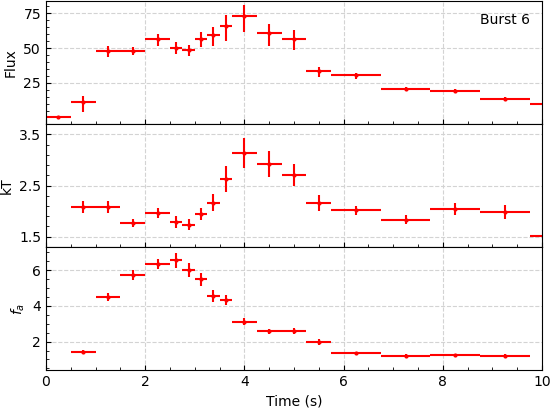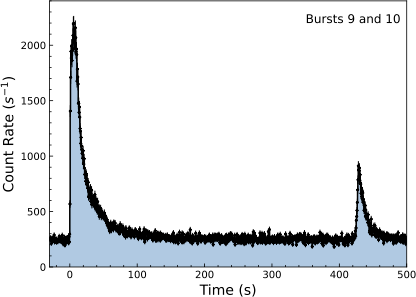NICER / ISS Science Nugget
for July 14, 2022
Further NICER insights into X-ray bursts and their effects on accretion disks
Thermonuclear X-ray bursts are sudden flashes of X-ray emission, lasting just tens of seconds, observed from some binary star systems. These so-called Type I bursts are produced as gas from an orbiting companion star accumulates onto the surface of a neutron star and reaches critical density and temperature levels at which unstable thermonuclear fusion of hydrogen and/or helium is triggered.
Type I bursts provide invaluable information about the physical properties of the neutron star and its immediate environs. In a recent manuscript reporting all of the X-ray bursts detected by NICER to date from the low-mass X-ray binary 4U 1636-536, an international team of researchers showed how bursts can enhance the rate of accretion onto the neutron star for a few seconds (Figure below left), and that the degree of enhancement is related to the brightness of the burst itself. NICER observations also revealed that some of the burst radiation can be reprocessed (or "reflected") by the accretion disk and can contribute to the X-ray intensity we measure.
In total, NICER has observed 51 X-ray bursts from this system. Within this rich sample are five events in which more than one burst is detected within a 10 minute span (Figure 2). These burst pairs and triplets are especially important because they provide information about the amount of matter consumed by thermonuclear burning on the surface during a burst as well as the rate of fuel accumulating on the surface of the star between bursts.
NICER's survey of X-ray bursts from 4U 1636-536, led by Dr. Tolga Güver of Istanbul University, has been accepted for peer-reviewed publication in The Astrophysical Journal; full-text preprints are available.


Figure:
Left: Evolution of X-ray emission properties during the first 10 seconds of one of the brightest bursts seen by NICER from the low-mass X-ray binary 4U 1636-536. The top panel plots X-ray intensity in units of 10^-9 erg/s/cm^2. The middle panel shows the temperature trend, in keV units, of the thermal emission, as derived by fitting a blackbody model to the time-dependent spectra of burst X-rays; at the peak of the burst, the temperature reaches 30 million degrees before cooling down. The bottom panel represents the varying rate of accretion of matter onto the neutron star, relative to that before the onset of the burst; NICER reveals that the accretion rate can increase by more than a factor of 6. Right: X-ray intensity profiles, in the 0.5-10 keV photon energy band, of recurring (double and triple) bursts observed from 4U 1636-536 in uninterrupted exposures with NICER.
<< Previous
Main Index
Next >>